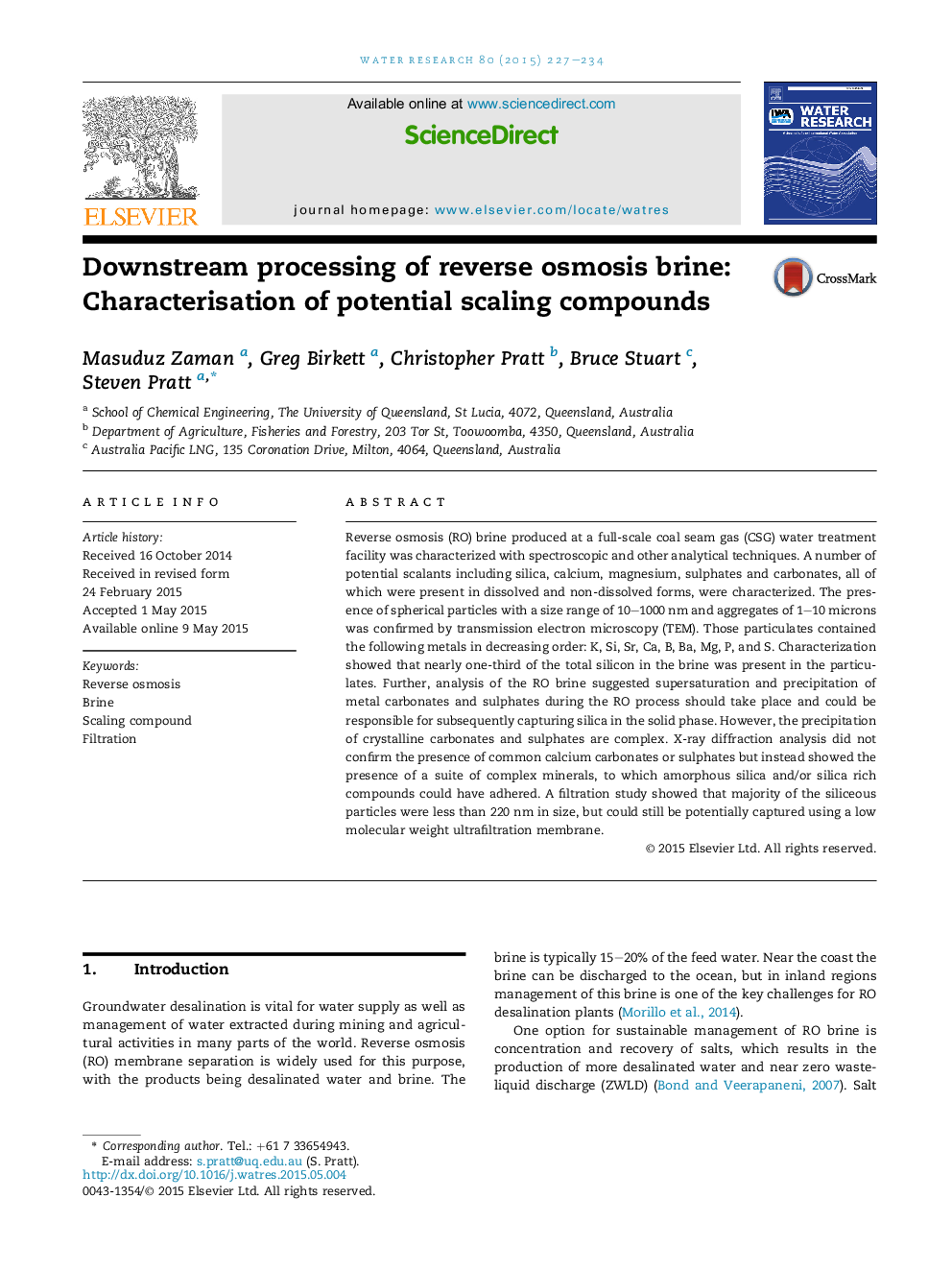| کد مقاله | کد نشریه | سال انتشار | مقاله انگلیسی | نسخه تمام متن |
|---|---|---|---|---|
| 6365706 | 1623088 | 2015 | 8 صفحه PDF | دانلود رایگان |
- Silica can exist both in dissolved and particulate form in coal seam gas brine.
- Mineral precipitation followed by silica polymerization can produce particulate scalant in RO brine.
- Mineral precipitation can be quite complex in multicomponent mixture and produce minerals other than simple salts.
- Ultrafiltration can be used to remove a significant portion of scalant from the RO brine.
Reverse osmosis (RO) brine produced at a full-scale coal seam gas (CSG) water treatment facility was characterized with spectroscopic and other analytical techniques. A number of potential scalants including silica, calcium, magnesium, sulphates and carbonates, all of which were present in dissolved and non-dissolved forms, were characterized. The presence of spherical particles with a size range of 10-1000Â nm and aggregates of 1-10 microns was confirmed by transmission electron microscopy (TEM). Those particulates contained the following metals in decreasing order: K, Si, Sr, Ca, B, Ba, Mg, P, and S. Characterization showed that nearly one-third of the total silicon in the brine was present in the particulates. Further, analysis of the RO brine suggested supersaturation and precipitation of metal carbonates and sulphates during the RO process should take place and could be responsible for subsequently capturing silica in the solid phase. However, the precipitation of crystalline carbonates and sulphates are complex. X-ray diffraction analysis did not confirm the presence of common calcium carbonates or sulphates but instead showed the presence of a suite of complex minerals, to which amorphous silica and/or silica rich compounds could have adhered. A filtration study showed that majority of the siliceous particles were less than 220Â nm in size, but could still be potentially captured using a low molecular weight ultrafiltration membrane.
Journal: Water Research - Volume 80, 1 September 2015, Pages 227-234
